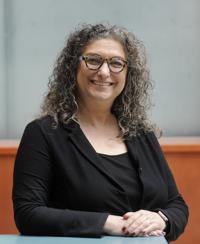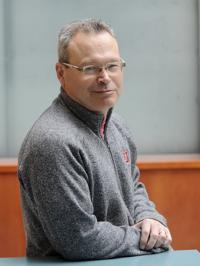Defeating dementia. That’s what Baycrest, an academic health sciences centre located on Bathurst Street in North York, hopes to achieve within 27 years through prevention, early detection and interventions such as brain stimulation.
“Our goal is to reach what we’re calling dementia zero, which is that by the year 2050, there are no more people being diagnosed with dementia, no more people going into long-term care because of dementia and no more people dying from dementia,” said neuroscientist Allison Sekuler, who is president and chief scientist at both the Baycrest Academy for Research and Education and Baycrest’s Centre for Aging and Brain Health Innovation.
Baycrest — which provides independent living, assisted living, long-term care and a post-acute hospital for older adults — is one of more than 50 partners in a new seven-year $318.4 million interdisciplinary research initiative called Connected Minds: Neural and Machine Systems for a Healthy, Just Society.
The project, aimed at pursuing research and co-creating technologies that “optimize the benefits and mitigate the risks of the new technosocial collective,” is led by York University with its main partner being Queen’s University.
Of the $318.4 million in funding, $105.7 million will come from the federal government’s Canada First Research Excellence Fund.
Sekuler said Baycrest’s partnership and collaboration will help her team “leapfrog toward” its goal of combating dementia. “I don’t know if you’ll ever get to complete dementia zero, just like you’ll never get to net zero for carbon emissions, but it heads us in that direction a lot faster and with a lot more power in the partnership.”

Dr. Allison Sekuler, of Baycrest Hospital.
Allison Sekuler is president and chief scientist at both the Baycrest Academy for Research and Education and Baycrest’s Centre for Aging and Brain Health Innovation. | Dan Pearce/Metroland
Sekuler said her team believes brain stimulation can have both a preventive and a treatment effect on people who have started showing age-related cognitive decline. “Either with electrical stimulation or magnetic stimulation, you can cause certain neurons in the brain to respond a certain way,” she said, adding this type of intervention is still in development, though it’s already been shown to help with certain kinds of hard-to-treat depression. “We’re looking at whether there are similar things that we could be doing for people who have age-related memory loss due to dementia.”
Sekuler stressed there are many different approaches that her team is exploring, noting “combination therapies are probably going to be the best.”
She suggested emphasis should also be put on prevention as at least 50 per cent of the risk for dementia could be reduced by lifestyle changes such as eating better, sleeping better, exercising more and being more socially engaged. “We think that a number of cases of dementia could just be prevented outright.”
The Connected Minds initiative, which officially started March 1, will include numerous projects that focus on three themes: co-creating research for societal needs and impact; investigating scales of social interaction from the smallest cellular and algorithmic processes involved in individual behaviour to complete social networks comprising both humans and machines; and developing ethical and responsible technologies.
“We have a total of 35 new professors that York and Queen’s have committed to hiring to augment this program. There are commitments to new space and infrastructure to support the program,” said Doug Crawford, York University neuroscience professor and Connected Minds’ scientific director, adding there are also commitments for more than 300 new graduate student positions to support the program.
“Hundreds of publications will be coming out from this in the coming years, and by the time we do our mid-term report, which will be about three years from now, I expect that we’ll be already having an impact on health care,” he said.
“Our mandate is very broad. It’s really about this conflux of communications, artificial intelligence, human-machine interactions and even brain-machine interactions, how all of this comes together and how it’s transforming society.”

John Crawford, of York University.
Doug Crawford is a York University neuroscience professor and the scientific director of the Connected Minds research initiative. | Dan Pearce/Metroland
Crawford said the current technological revolution will have transformative positive and likely unintended negative impacts on humanity for generations to come. “You can’t just leave it up to, say, engineers to figure out what’s good for society. You have to have a real multidisciplinary team that understands all the elements of these human-machine interactions,” he said.
“We’re not going to stop the growth of technology, and nobody wants to. We just want to make sure that it’s done in the safest possible way, that the outcomes for communities and humanity are positive, and that we want to avoid the negative consequences.”
STORY BEHIND THE STORY: When reporter Andrew Palamarchuk learned about a new $318.4 million technology research initiative led by York University, he wanted to explore the potential impact it may have on the project’s community partners and society at large.


